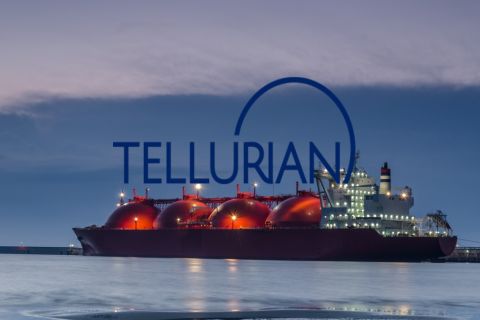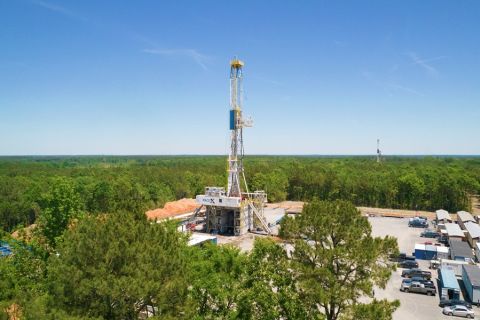
Investors and investment banks are the primary drivers pushing the pure-play strategy, and, while there is certainly great upside to this approach, there are also new risks that may not be readily apparent, says Raoul LeBlanc, vice president of financial services at IHS Markit. (Source: Hart Energy/Shutterstock.com)
[Editor's note: A version of this story appears in the January 2019 edition of Oil and Gas Investor. Subscribe to the magazine here.]
A continuing trend toward greater specialization in the oil and gas industry is enabling companies, particularly in North American shale plays, to achieve greater efficiencies, please investors and improve financial results.
But an IHS Markit analysis says this corporate strategy is putting many companies at significant risk to market volatility, fragility and vulnerability to unforeseen events.
Specialization is increasingly driving strategic focus for oil and gas operators because, for a time, it works, and the market prefers and rewards specialists. When focusing on one play type or asset, like an athlete who focuses on a single sport, one tends to get better at it and become faster and more efficient.
Investors and investment banks are the primary drivers pushing this strategy, and, while there is certainly great upside to this approach, there are also new risks that may not be readily apparent to the C-suite executives.
For much of the industry’s history, bigger was unquestionably better. This made sense on many levels because the industry spans the globe and faces a nearly unparalleled array of political, financial and technical risks. Scale and diversity, it was argued, were the best buffers against these risks.
That “bigger is better” truism, however, has been supplanted by an inexorable push toward specialization. The trend started with the emergence of the shale industry and gathered momentum when those successes attracted increased spending and exposed the often poorer risk-reward ratio of many international investments.
Two new developments accelerated the trend toward onshore specialization. First, shale production has grown large enough to generate significant cash flows, allowing companies to sell the “distraction” of other asset types, which virtually every large E&P player has done in their North American portfolio.
Companies now specialize in shale, offshore assets, CO₂ plays or other themes. Examples include Encana Corp.’s (NYSE: ECA) split and Occidental Petroleum Corp.’s (NYSE: OXY) spin-off of its 95-year-old California business.
Secondly, the maturation of major shale plays beyond the delineation phase has reduced risk by revealing the overall quality of acreage-holdings. As the industry moved into the low-risk, high-capital phase of the plays at the same time cash flows collapsed post-2014, companies focused on their best assets.
Operators that once strived for breadth in technologies and geography now compete in narrower competitive bands in pursuit of a deeper, more limited, set of skills. Global producers increasingly focus on countries or regions, shifting away from international activities to onshore North America. Within North America, the hypercompetitive environment has pushed producers to become pure-play companies.
Skills, Endurance
Within the U.S. upstream segment, the transition from conventional to unconventionals has been profound. At the dawn of the tight-rock era, virtually all companies in the U.S. held portfolios characterized by conventional oil and gas holdings in multiple regions, plus some near-field exploration opportunities.
As the potential of shale became apparent, they shifted capital deployment toward those assets, retaining conventional assets as cash generators to fund early-stage positions.
The biggest independents—Chesapeake Energy Corp. (NYSE: CHK), Devon Energy Corp. (NYSE: DVN), Anadarko Petroleum Corp. (NYSE: APC) and EOG Resources Inc. (NYSE: EOG)—are examples. While their end results turned out differently, each moved to buy a significant foothold in multiple plays.
The companies understood that some plays fail and that, despite best efforts, their acreage might not be in the “sweet spot” of well quality. Diversification among the various plays hedged those risks.
Anadarko, Devon, Encana and Pioneer Natural Resources Co. (NYSE: PXD) were among independents that led the retrenchment to the U.S. onshore. Now, even global companies including Chevron Corp. (NYSE: CVX), Exxon Mobil Corp. (NYSE: XOM) and BP Plc (NYSE: BP), are redirecting significant capital to the U.S. onshore—and, in particular, the Permian Basin.
Like decathletes, major companies possessed a breath-taking range of skills and endurance, but, as more specialists dig down on particular technologies and geographies, the decathletes are finding it hard to compete. This has been particularly evident in the majors’ struggle to compete with shale specialists at their own game.
Specialization narrows a company’s horizons. Building an operation around developing a single or narrow portfolio of assets—even one as prolific as the Permian Basin—may determine a company’s lifespan.
This has already been witnessed with producers focusing on older gas plays, such as the Barnett or Pinedale, and is even creeping into the more mature Bakken play, where investors have grown concerned about the dwindling inventory of core drilling opportunities.
The Divide
There are few companies spanning the shale-gas and shale-oil divide. There are no major producers with significant positions in both the Marcellus/Utica, the top gas play in the U.S., and the Permian Basin, the top oil play.
Increasingly, producers are becoming pure-play companies focusing on just one basin—or even subsections of a single basin. Pioneer is selling its Eagle Ford assets to go “all in” on the Permian Basin, where it holds a large, market-leading position.
RELATED: Pioneer Exits South Texas Sinor Nest Field In $132 Million Sale
The question becomes one of what happens to those single-play specialists when their play is no longer competitive with other shale basins.
The push toward specialization also risks sapping a company’s ability to explore new frontiers. In today’s environment, new-ventures investments are a costly distraction from near- and medium-term objectives. The problem will become apparent over time if the company fails to successfully migrate from its core asset.
Perhaps the greatest risk of specialization comes from environmental volatility. The specialist company is fragile to unanticipated changes—the kind the corporate giants were built to withstand.
For instance, a sudden public turn against fracking in the form of a regulatory ban or judicial stay—like that which recently threatened Colorado’s Wattenberg play or what occurred with regards to the ban on new deepwater drilling in the Gulf of Mexico following the Macondo disaster—could spell disaster for a company with no other options in its portfolio outside of its area of specialization.
Additionally, other options of cheaper supply could undermine the economics of a single type of asset. A breakthrough in renewables technology or more forceful government policy to cut carbon emissions could quickly sap value from a company’s portfolio if it isn’t able to adapt and compete.
Investors will be quick to abandon a company that loses out in these market shifts. This divergence of exposures creates a gaping wedge between management and shareholders in an era of specialists.
Short-Term Interests
In the past, investors wanted asset diversification to protect the company’s long-term viability. Today, investors seek diversification through their own investment in many different companies, so they are more focused on a company’s short-term financial performance rather than its long-term viability.
That works for the investors, but it may run counter to the company’s long-term best interests. With that in mind, it is imperative for company leaders to assess and understand their specific risks and, then, create a strategy to mitigate those risks without sacrificing short-term growth.
Ironically, while the narrower skillsets of specialization do deliver financial results and the specialization trend will continue, during the recent oil price downturn, the integrated business model proved its worth.
As falling prices undercut the profitability of upstream operations, the integrated companies saw their downstream operations pick up the slack, while the more diversified portfolios gave them more options to find attractive investment opportunities.
In the U.S. onshore, every play is in the process of down-spacing. The point is that every asset—and especially the disproportionately small core areas that some operators specialize in—is finite and will deplete. In the long term, companies will need to transition to a new asset.
In addition to exhaustion concerns, specialization in the development phase, which is where most companies are at this point in unconventionals, also makes it difficult for companies to add significant shareholder value. IHS Markit sees oil and gas companies typically creating the most shareholder wealth by taking chances on unproven rocks and delivering big new reserves in the proving and optimization stages of a play.
A company focused on the efficient manufacturing of shale wells at the mid-life stage must invest the bulk of the lifetime capital during this phase, but enjoys relatively little value-add from low-risk capital deployment. Opportunities for value creation are especially thin for later entrants that paid an entry premium for premier plays like the Permian Basin.
The key here is that specialization works—until it doesn’t. The industry’s rush to focus is exposing companies to systemic and company-level risks that “diversification” previously reduced. Specialists would be wise to consider these hidden risks and develop options to mitigate them.
Raoul LeBlanc is vice president of financial services at IHS Markit and an author of the IHS Markit corporate-strategy analysis “The Promise and Peril of Specialization.”
Recommended Reading
Which Haynesville E&Ps Might Bid for Tellurian’s Upstream Assets?
2024-02-12 - As Haynesville E&Ps look to add scale and get ahead of growing LNG export capacity, Tellurian’s Louisiana assets are expected to fetch strong competition, according to Energy Advisors Group.
Ohio Oil, Appalachia Gas Plays Ripe for Consolidation
2024-04-09 - With buyers “starved” for top-tier natural gas assets, Appalachia could become a dealmaking hotspot in the coming years. Operators, analysts and investors are also closely watching what comes out of the ground in the Ohio Utica oil fairway.
Exclusive: Rockcliff CEO on $2.7B TGNR Deal, Value of Haynesville M&A
2024-04-10 - Rockcliff Energy CEO and President Alan Smith discusses the ups and downs of executing the transaction with TG Natural Resources and what's on the Rockcliff III radar, in this Hart Energy Exclusive interview.
An Untapped Haynesville Block: Chevron Asset Attracts High Interest
2024-04-03 - Chevron’s 72,000-net-acre property in Panola County, Texas is lightly developed for the underlying Haynesville formation — and the supermajor may cut it loose.
Aethon Cuts Rigs but Wants More Western Haynesville Acreage
2024-03-31 - Private gas E&P Aethon Energy has drilled some screamers in its far western Haynesville Shale play—and the company wants to do more in the area.





